The twenty-sixth Sherlock Holmes story written by Sir Arthur Conan Doyle was titled, The Adventure of the Final Problem (1893) (The Arthur Conan Doyle Encyclopedia ). Watson writes the narrative sharing the events that led to Sherlock Holmes’s demise at the hands of his nemesis, Professor Moriarty. Doyle hoped the death of Sherlock Holmes would allow him to explore other writing ventures. The Sherlockian fandom was outraged by the death of their beloved character and called for his resurrection. They wore black mourning bands, newspapers published Sherlock Holmes’s death and obituary and the Strand Magazine lost “over 20,000 subscriptions” (Fan Lore: Sherlock Holmes ). Their action illustrates how the Sherlockian fandom from its beginnings perpetrated a participatory culture and saw Sherlock Holmes as a real person rather than a character from a story.
The Adventure of the Final Problem (1893) Watson explains that Professor Moriarty’s brother, Colonel James Moriarty, has forced his hand in laying the facts to the public about what occurred between Sherlock and Professor Moriarty. After recently marrying Watson visited Holmes when Holmes requested Watson’s presence to go on holiday with him. Watson finds this request unusual because Sherlock’s actions are always deliberate. Holmes explains to Watson how Professor Moriarty was the center of a criminal web and the mind behind many crimes. Also, Holmes expresses that he wants to free society from Moriarty’s grip and shares about his encounter with Moriarty in the apartment. During the encounter Professor Moriarty warns Holmes to not stand in his way or face his own destruction. Sherlock expresses admiration for Moriarty’s brain and cunning. Moriarty follows up with his threats and three attempts on Sherlock’s life were made the next day. Sherlock gives Watson detailed instructions on how they are to meet the next to travel to the Continent. Holmes leaves Watson due to the danger of Moriarty. They meet up again at the station with Moriarty right on Watson’s tail. Holmes and Watson arrive early May to the village of Meiringen and take rooms in the Englischer Hof. Watson shares with the readers about the Reichenbach Falls are close by and a steep narrow path leads to them. Holmes and Watson are strolling on the path when Watson receives a notice requesting his medical expertise and presence with a dying British woman. Watson runs back to the village to assist with the situation. Upon Watson’s arrival back at the hotel, he finds out that there is not any woman and it was one of Moriarty’s tricks to get Sherlock alone. Watson rushes back up the path where he finds a goodbye note written by Sherlock Holmes. Watson closes the story that experts agree there was a physical fight between the two adversaries where they both ended up over the falls and that it’s impossible to recover the bodies. Watson declares that he wants to clear Sherlock’s name and ends that Holmes was “the best and the wisest man whom I have ever known” (Insert Citation for Doyle).
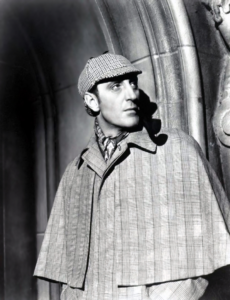 Basil Rathbone and Nigel Bruce starred in (1939) The Adventures of Sherlock Holmes as the first adaptation of the story, The Adventures of the Final Problem (1893). First, in examining the United State movie poster for the film shows the use of the red lettering that harkens back to the story, A Study in Scarlet, with the red blood letters on the wall. Then, Holmes is shown wearing the deerstalker hat and inverness cape as shown in Figure 10 below.
Basil Rathbone and Nigel Bruce starred in (1939) The Adventures of Sherlock Holmes as the first adaptation of the story, The Adventures of the Final Problem (1893). First, in examining the United State movie poster for the film shows the use of the red lettering that harkens back to the story, A Study in Scarlet, with the red blood letters on the wall. Then, Holmes is shown wearing the deerstalker hat and inverness cape as shown in Figure 10 below.
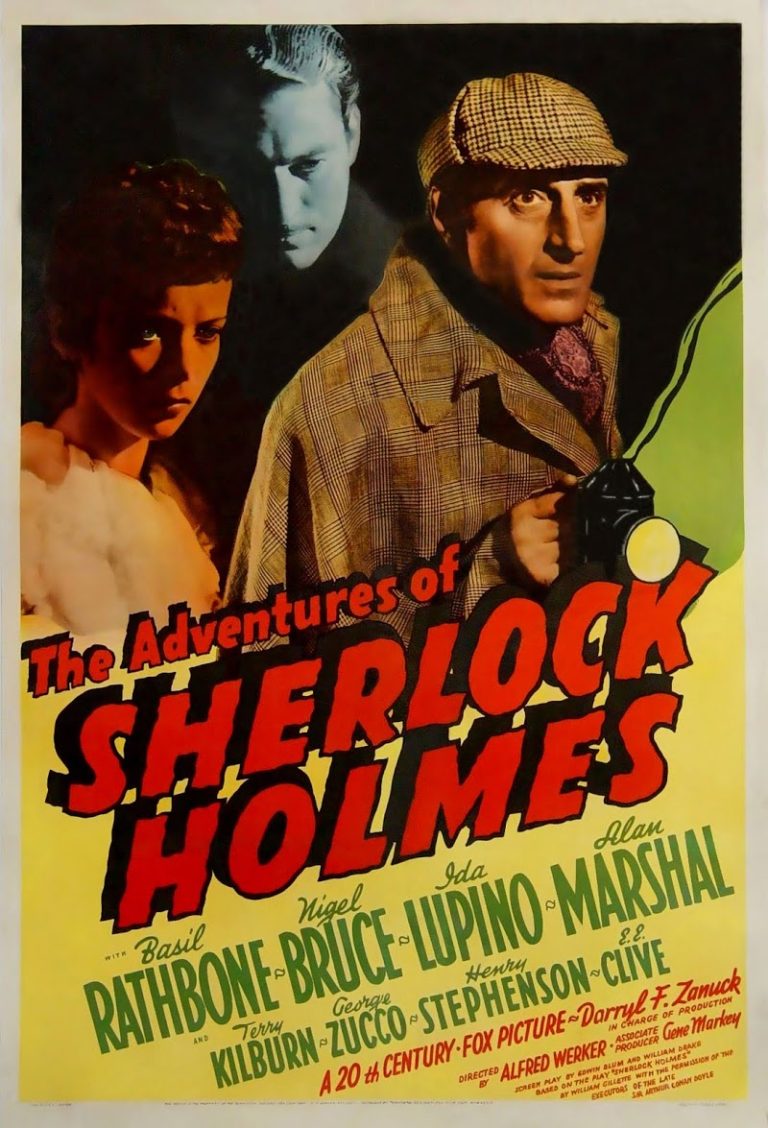
Additionally, the poster features Sherlock, a mysterious man and a woman next to Holmes. Holmes is also holding what appears to be a flashlight. The poster illustrates the adaptation’s changes in that it features the female character over Watson and only in one poster shows Moriarty. Also, the posters show Sherlock wielding either a gun or flashlight. Also, Watson is not portrayed in the posters.
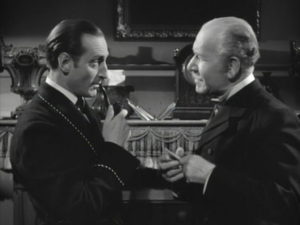
Edwin Blum and William Drake wrote the film’s screenplay based upon Doyle’s The Adventure of the Final Problem (1893). The opening credits show the Sherlock iconography with Holmes wearing deerstalker hat and smoking the calabash pipe. A jury comes back with a non-guilty verdict for Professor Moriarty. Holmes meets up with Professor Moriarty leaving the courtroom and they take a cab together. Holmes expresses that he admires Moriarty’s brain and Moriarty expresses that Holmes is the one man that can defeat him. Moriarty states that he is planning the crime of the century and after he beats home wants to devote his time and energy to abstract science. The two men go their separate ways. Moriarty calls for his servant to post a letter for him. Holmes is shown playing the violin and Watson comes through the door. Holmes shows the note that Moriarty sent him. A female client requests Holmes advice on whether or not to attend a garden party. Watson comments that Sherlock is fiddling while Rome burns and Holmes responds that it’s pure elementary. Sir Ronald Ramsgate visits Sherlock about wanting him to watch when the Star of Delhi jewel is delivered to make sure that it’s not stolen. Ms. Brandon arrives for her consultation with Holmes about attending the party. She shows the note that she received and states that her father received a similar note before his murder. Holmes examines the note with his magnifying glass. Ms. Brandon is concerned for her brother and her fiancée is introduced to the audience, Mr. Hunter. The concern is correct as Ms. Brandon’s brother is killed while returning home. The suspicion falls on Ms. Brandon’s fiancé, Mr. Hunter. Sherlock recommends that Ms. Brandon attends the party and he goes there in disguise. Late in the evening at the party, Anna Brandon hears that there is a visitor waiting in the yard to speak with her. She leaves thinking that it’s Sherlock Holmes. It’s a gypsy man that attacks her and Sherlock and Watson save her in time. Then, Sherlock leaves because the delivery of the jewel. He follows Moriarty and punches him as he is captured. It ends with Sherlock and Watson in the study and Holmes playing the violin.
By contrasting this Rathbone adaptation against the original Doyle story and the designated signs shows deviations and the continued perpetuation of Paget and Gillette’s influence. This film adaptation kept the characters of Sherlock Holmes, Dr. John Watson and Professor Moriarty but added Moriarty’s servants, Ms. Anna Brandon, and Mr. Hunter. Although, Rathbone is considered “the defining screen Holmes” –it’s only this adaptation and “The Hounds of Baskerville” that are set in “the original literary-historical period” (Vanacker 67). Rathbone’s Sherlock Holmes films were set in the 1940s (the time period which they were filmed) and shows Holmes fighting the Nazis. Since Rathbone and Nigel Bruce are considered the pinnacle Holmes and Watson, their likeness has been used by in marketing advertisements for contemporary products (Vanacker 24). Abigail Burnham Bloom and Mary Sanders Pollock in their book, Victorian Literature and Film Adaptation argue Doyle’s early novels depict Sherlock Holmes as ” a violin-playing, cocaine-taking Holmes combating ennui through an aesthetic connoisseur ship of crime; this figure surely is a far cry from the embodiment of English heritage under siege in World War II propaganda” (Bloom and Pollock 209). Rathbone’s Holmes was brought out of Victorian England to fight the present day terrors of the time-period, the Nazis. The Basil Rathbone and Nigel Bruce, Holmes and Watson, exemplify what Bloom and Pollock argue when familiar characters are “detached” and “reinserted” into different time frames and “develop lives of their own outside their source texts” (Bloom and Pollock 207). Rathbone’s Holmes became the iconic Sherlock which many adaptations later modeled after. This Rathbone edition of Holmes “is a thinking machine who is also a master of disguise, a connoisseur of the arts, who knows how to treat a lady even though he will never settle down with one, a politically astute consultant who can survive repeated brushes with violent death” (Leitch 222). Bloom and Polluck argue that Nigel Bruce’s Dr. John Watson becomes a “comical sidekick who is teased and even publicly humiliated by Holmes contrasts sharply with the Dr. Watson of the original tales” (210). These comic overtones extend down to the Cumberbatch and Freeman version.
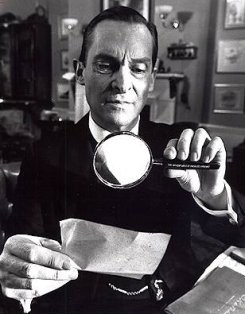
Jeremy Brett starred as Sherlock Holmes in the Granada Television series. In their Season two, sixth episode they aired “The Final Problem” (1985) which is their adaptation of the Doyle story. John Hawkesworth wrote the screenplay for this episode of the Granada series. The episode shows how Holmes solved the faked Mona Lisa case for the French authorities and thwarted Moriarty’s plans of selling copies. Moriarty demands Holmes to withdraw. Sherlock and Watson escape to the European continent with Moriarty following close behind. They end up in Switzerland and lodge near Reichenbach Falls. Watson receives a note that an English woman is dying and requests his assistance. He goes back to find that it was a hoax and rushes back to Sherlock. Watson finds a note written by Sherlock Holmes under duress with Moriarty. He narrates that they both fell from the Reichenbach Falls and that he mourns his friend (The Arthur Conan Doyle Encyclopedia ). The original story does not include any forgery or Holmes working on a case for the French government. This offers visuals that match the illustrations done by Paget for the original story and shows the viewers both Holmes and Moriarty falling down the Reichenbach Falls. For example, Paget’s illustration titled “The death of Sherlock Holmes” seen below in Figure 15 was mirrored by the director.
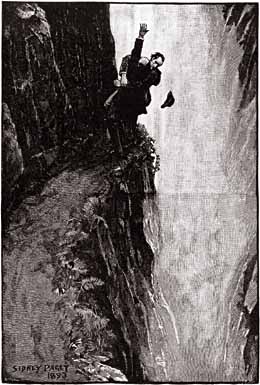
Figure 16: Sidney Paget “The Adventure of the Final Problem” Source credit: https://www.arthur-conan-doyle.com/index.php?title=File:Illus-fina-paget-01.jpg
The illustrations for the McClure magazine in the United States were done by H.C. Edwards. In Figure 17 and 18 below –show H.C. Edward’s illustration next to a photo from the episode.
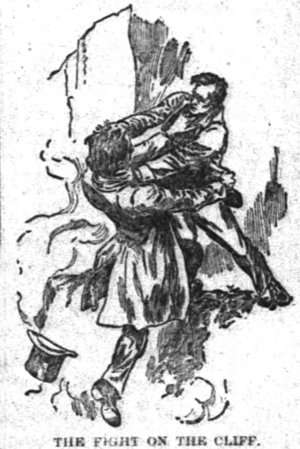
Figure 17: H.C. Edward Source Credit: Source credit: https://www.arthur-conan-doyle.com/index.php?title=File:Granada-fina-16.jpg
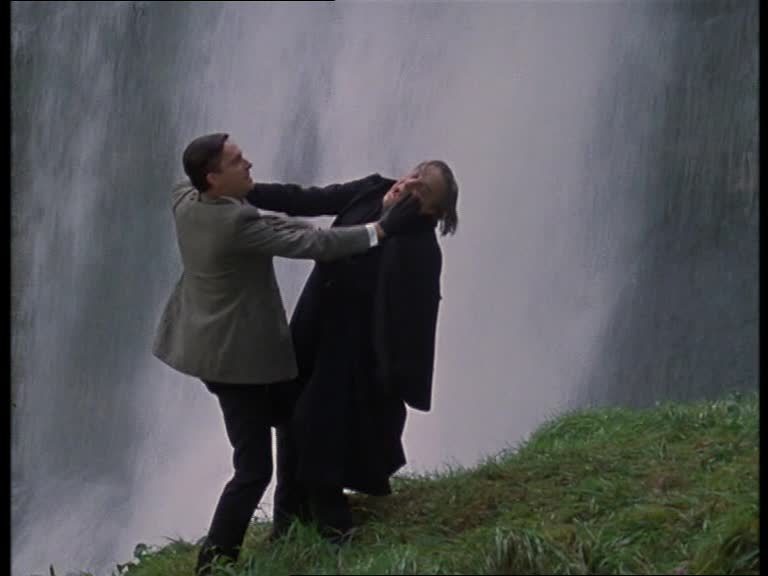
Figure 18: https://www.arthur-conan-doyle.com/index.php?title=File:Illus-fina-edwards-11.jpg
Thomas Leitch in his book, Film Adaptations and Its Discontents: From Gone with the Wind to The Passion of the Christ (2007) argues the Granada series “subordinates Doyle’s text to the conventions of television drama” in how the series enlarged Watson’s role and began their stories with the action of the criminal or the discovery of a body rather than at Holmes and Watson’s apartment (Leitch 227). The beginning of “The Final Problem” holds to this assessment in that the opening scenes are a carriage rushing past with a man running and Watson opens the story. Additionally, Leitch assesses that “The Universal adaptations pursue this goal by treating Holmes frankly as a resource to be pressed into service, a timeless hero who, once resurrected, can never die or age. The Granada adaptations pursue it through selective fidelity, presenting more dramatically compelling versions of Holmes’s adventures set in an expanded universe bound by Victorian times and mores yet more rounded and emotionally comprehensive than Doyle’s.” (Leitch 231).
“In rewriting Doyle, the adaptations are choosing fidelity to the appealing macro text of the Victorian milieu and to a selection of powerful micro texts like the shadow of the apelike figure outside Edith Presbury’s room and the tableau of Holmes and Moriarty hurtling over Reichenbach Falls (an image well represented in the iconography of Sherlockian illustrations even though it depicts an event that never happened) over fidelity to the texts Doyle wrote. “ (Pg. 229)
The Universal films had addressed this problem by casting Nigel Bruce and giving him a strong, if widely execrated, profile of his own. The Granada films address it by giving Watson more of the dialogue that Doyle assigns to other characters, especially Holmes, breaking Holmes’s often long monologues into more dramatic dialogues even as they give Burke and Hardwicke more to do than nod silently.” (Pg. 227) Thus, Watson’s role grows in the Granada adaptations.
Works Cited
Bloom, Abigail Burnham and Mary Sanders Pollock. Victorian Literature and Film Adaptation. Cambria Press, 2011. Print.
Fan Lore: Sherlock Holmes . 6 February 2015. web. 12 September 2016.
Leitch, Thomas. Film Adaptations and Its Discontents: From Gone with the Wind to The Passion of the Christ . John Hopkins University Press , 2007. Print .
The Arthur Conan Doyle Encyclopedia . 22 June 2016. Web. 12 September 2016.
Vanacker, Sabine and Catherine Wynne. Sherlock Holmes and Conan Doyle: Multi-media Afterlives. Palgrave MacMillan , 2013. Print .